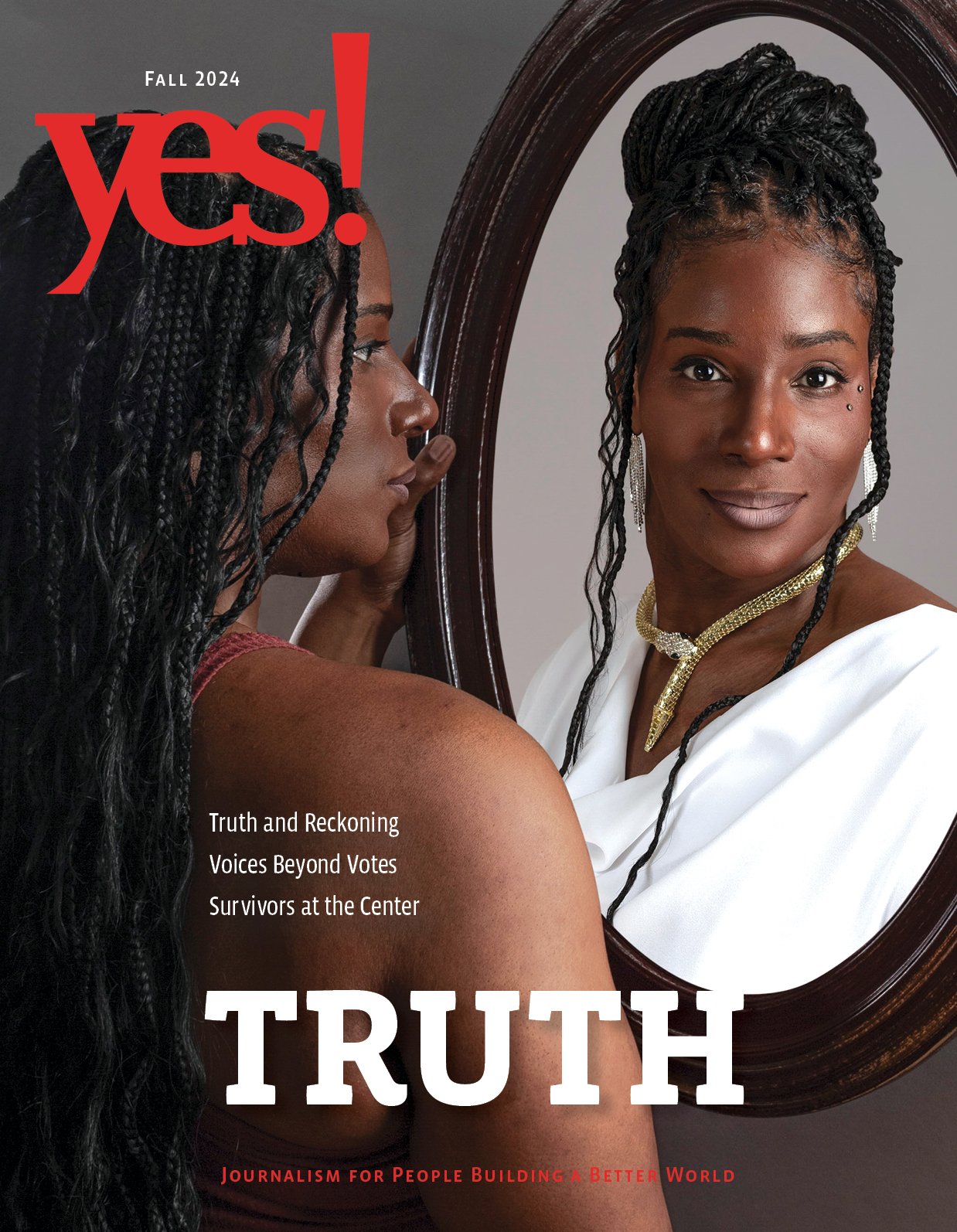
Along the borderlands of Tukwila and SeaTac exists an urban-suburban district south of Seattle. Foster High School, the only high school in the Tukwila School District, is situated in a physical and social environment typical of border areas: one of tension and caution, of wholesomeness and immigrant families. The International Rescue Committee, with an office less than a mile away from Foster High, began settling refugees in the mid 1990’s in Tukwila, where low-income housing was widely available. Inside Foster are tight corridors representing 51 nations and 44 languages, ranging from East-African to Russian-Turkish, from Iraqi to homegrown youth of Tukwila.
I currently teach social studies and English language development. When I was a student, my family—although loving and supportive of my doing well in high school—didn’t really emphasize higher education. Not having a high school diploma herself, my mom didn’t know how to encourage going to college. Instead, she emphasized love, discipline, compassion, and empathy, aspects I attempt to bring to my students.
Welcome to Foster High School! Forty-four languages are spoken here. Photo courtesy of Luis Escamilla.
identity in the classroom. This year it has been my Burmese students. By voicing national history or contemporary issues of their home country, students create a back-and-forth that leaves other ethnic groups vying for their share of attention.
But there’s also a sense of solidarity that plays out among my students. The immigrant experience is something that binds my students together—the shared struggle of integration into US culture, of learning English along with the typical challenges of adolescence. In a way, these struggles allow the students to see each other as reflections of themselves. Playing sports like soccer and badminton has also been a means for students to set aside their national and ethnic conflicts.
In my teaching, I attempt to highlight the disenfranchised and the disempowered in class content to prompt students to connect with, comprehend, and further investigate resistance, revolution, and self-determination. My students have been introduced to rebels and truthseekers like Yanga, the slave resistance leader of Mexico, Toussaint L’Ouverture of Haiti, Harriet Tubman and LGBTQ rights leader Harvey Milk. We utilize resources like History for All of Us, Zinn Education Project, and PBS Learning Lab, along with pieces of Paulo Freire’s educational frameworks.
In a way, these struggles allow the students to see each other as reflections of themselves.
Aside from the academic piece, my colleagues and I must be keen to our students’ emotional health. Some bring a history of trauma—either their own or their family’s. Many have shown resilience beyond belief, having experienced violence by government or having witnessed others, including loved ones, killed or tortured by militia forces. Jamli, a junior from Kurdistan in Northern Iraq, came to the U.S. less than five years ago with a sense of hope and drive that humbled me to work with him. Despite having seen numerous uncles victimized by secular and religious extremists in post-U.S. invasion, Jamli has become a classroom leader, critical thinker, and overall thoughtful young man.
Conarky, a senior from West Africa, has grown especially outspoken during this election season—asking questions about the Washington state caucus, Madyan a high school junior who came to the U.S. from Kurdistan Northern Iraq in 2013 is eager to discuss issues of war and justice in the U.S. and in Iraq any chance he gets. Photo courtesy of Luis Escamilla.
Much of our support for students is aimed at developing a sense of agency—the ability to act on one’s own to change one’s reality. Helping students develop a sense of pride in their cultural and immigrant identity within the larger, dominant (white, Anglo-Saxon) culture that many of our
American-born students have already internalized. Allowing students to use their native tongue in the classroom, but also practicing English within a space of risk-taking. Recently, my class held a “Socratic Seminar,” a student-led academic discussion exploring a politically or socially relevant topic, like the revolution proposed by Bernie Sanders. It is an opportunity to be a part of a national conversation, and it’s within this context that students develop a sense of ownership over their thoughts, opinions, and ultimately their future.
Without fostering these identities of critical consciousness, we fall into the trap of repeating cycles of ignorance and marginalization.
When working with immigrant and refugee youth, my colleagues and I must take a “needs-based” approach articulated by our students. These needs often include acknowledgement and respect of their cultural backgrounds, an educational environment that’s free from corporal punishment and that provides a “safe space” to learn, and opportunities to have their voices integrated within the larger school culture.
Ultimately, teachers can’t do it all. More involvement Escamillos students interpretation of self-determination led them to take a deeper look at how they perceive the U.S. Photo courtesy of Luis Escamilla.
During the morning’s flag salute, I watch my students’ faces to see if there’s cognitive dissonance occurring, the internal struggle between saluting allegiance to the country they now reside in yet feeling attached and proud of where they were born. I wonder if they perceive their new home as America the Beautiful—that their presence here is what makes America a more beautiful place.
For further information on Foster High School, including changes it has made to increase math achievement and graduation rates, read Seattle Times story, “The revival of Foster High: School filled with refugees makes a comeback.”
